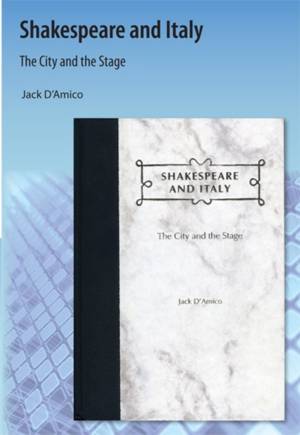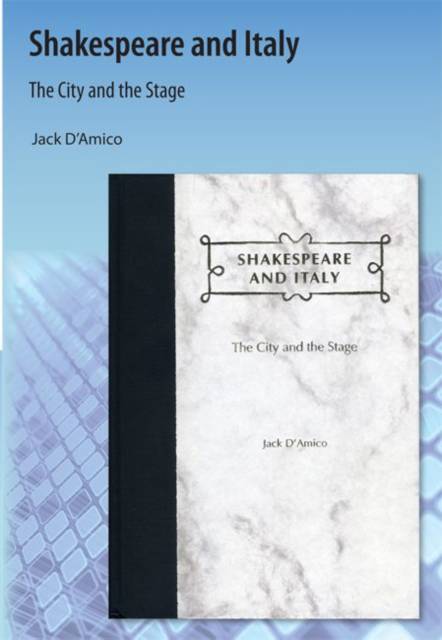
- Afhalen na 1 uur in een winkel met voorraad
- Gratis thuislevering in België vanaf € 30
- Ruim aanbod met 7 miljoen producten
- Afhalen na 1 uur in een winkel met voorraad
- Gratis thuislevering in België vanaf € 30
- Ruim aanbod met 7 miljoen producten
Zoeken
Omschrijving
"A must-read for any student of Renaissance culture as well as for Shakespeare scholars. It shows how and why Italian city life reverberated even across the Channel to enliven the English stage."--Silvia Ruffo Fiore, University of South Florida "D'Amico's book gives new life to an old idea--that Shakespeare's plays are essentially affirmative--and this is a message that not only seems to me deeply true but also will be welcomed by very many readers."-- Dain A. Trafton, professor emeritus, Rockford College In this rich study of the Italian settings in eleven of Shakespeare's plays, Jack D'Amico examines the essential characteristics of 16th-century Italian society and the Italian city-state as they come to life on Shakespeare's stage. Through the medium of his theater, we see how he creates an urban world open to exchange and decidedly theatrical in spirit. We witness Shakespeare's Italy become, simultaneously, the distant city and the mirror of his own Renaissance London. The book begins by reviewing what Shakespeare may have known about Italy, both the attractions and the dangers of Italian society as they may have appeared in the contemporary popular imagination. D'Amico observes that the dangers seem more pronounced in the tragedies, while the allure of a foreign city, where change and order can coexist, seems to predominate in the comedies. Structuring the book around specific features of the imagined urban setting, he discusses the piazza, the garden, the street, interior spaces, the court, and the temple, demonstrating that the city's limits and contradictions lend a special kind of consistency to the world of Shakespeare's plays. Written in a highly accessible style and carefully documented with primary and secondary sources, this book will be of great interest to teachers and scholars, to undergraduate and graduate students, and to the general reader.
Specificaties
Betrokkenen
- Auteur(s):
- Uitgeverij:
Inhoud
- Aantal bladzijden:
- 216
- Taal:
- Engels
Eigenschappen
- Productcode (EAN):
- 9781616101121
- Verschijningsdatum:
- 24/09/2009
- Uitvoering:
- Paperback
- Formaat:
- Trade paperback (VS)
- Afmetingen:
- 149 mm x 216 mm
- Gewicht:
- 281 g

Alleen bij Standaard Boekhandel
+ 100 punten op je klantenkaart van Standaard Boekhandel
Beoordelingen
We publiceren alleen reviews die voldoen aan de voorwaarden voor reviews. Bekijk onze voorwaarden voor reviews.








